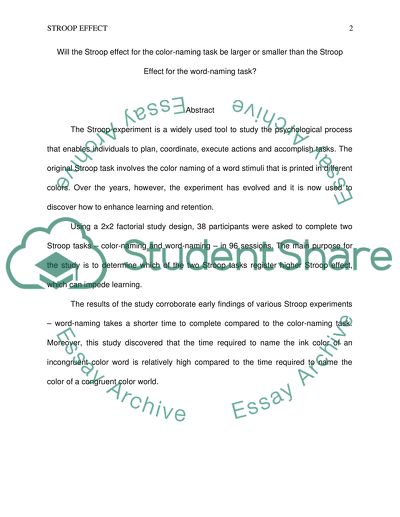Cite this document
(“Selective Attention - Stroop Effect Research Paper”, n.d.)
Retrieved from https://studentshare.org/psychology/1445455-selective-attention
Retrieved from https://studentshare.org/psychology/1445455-selective-attention
(Selective Attention - Stroop Effect Research Paper)
https://studentshare.org/psychology/1445455-selective-attention.
https://studentshare.org/psychology/1445455-selective-attention.
“Selective Attention - Stroop Effect Research Paper”, n.d. https://studentshare.org/psychology/1445455-selective-attention.


